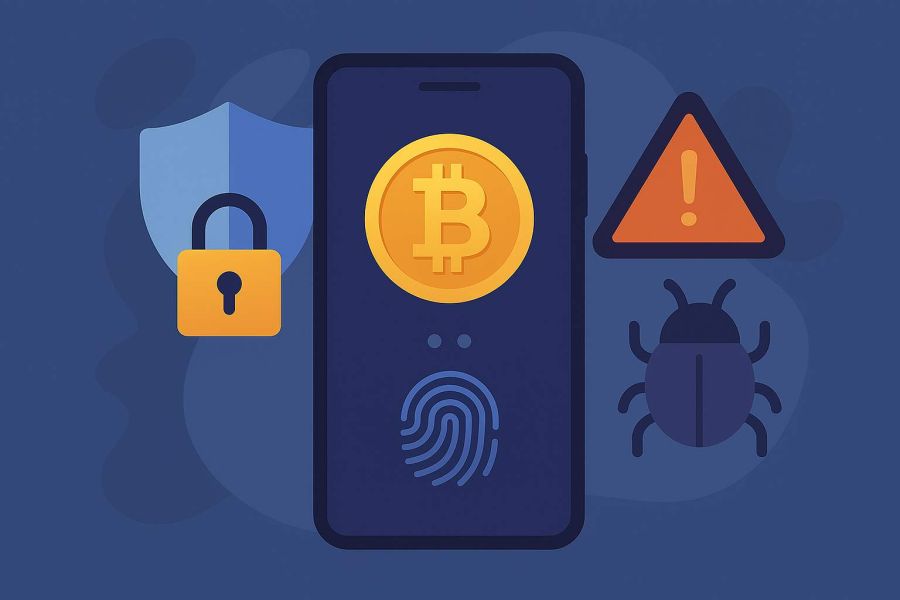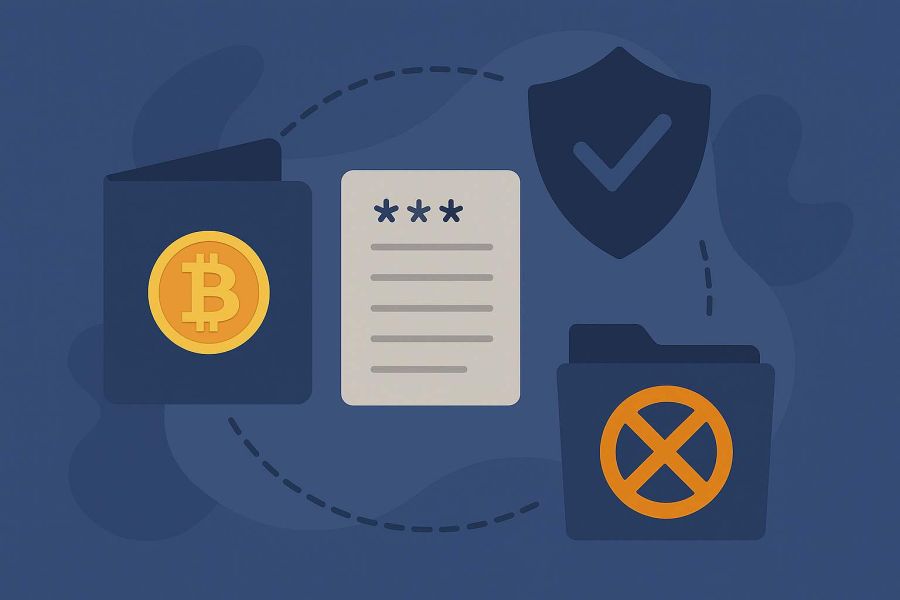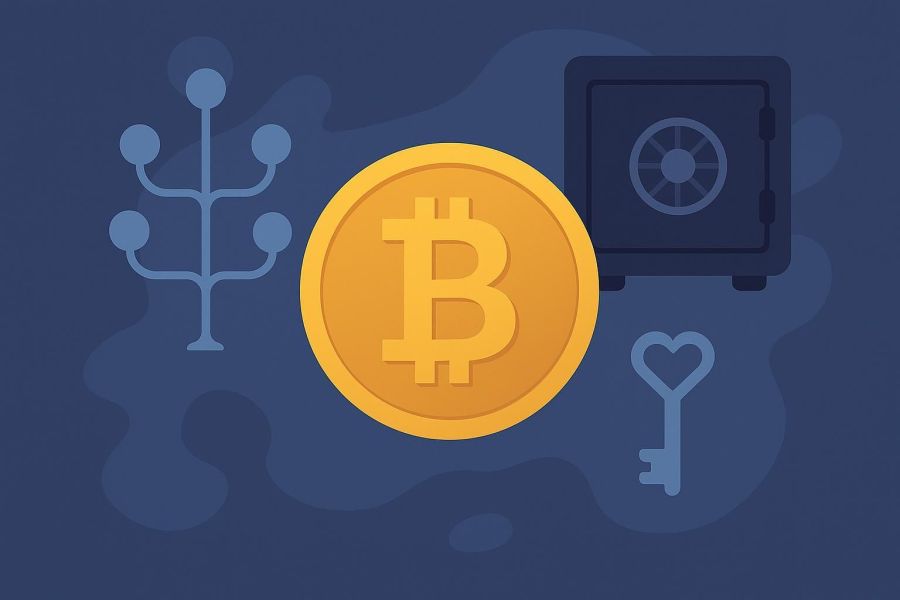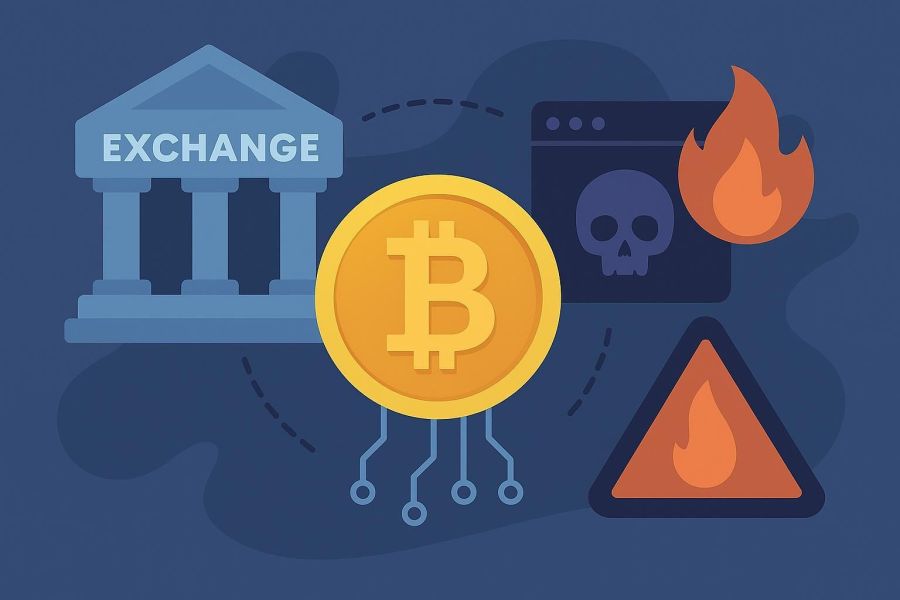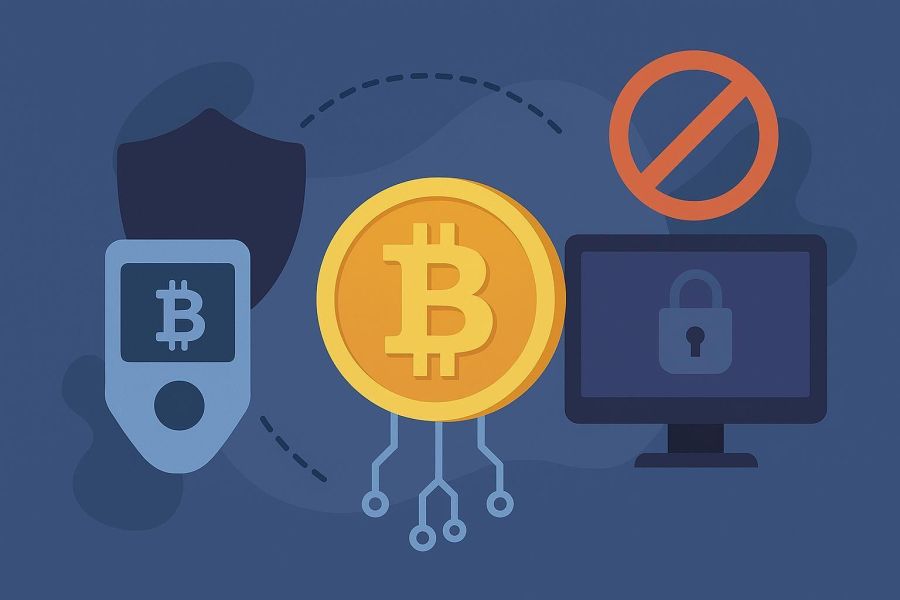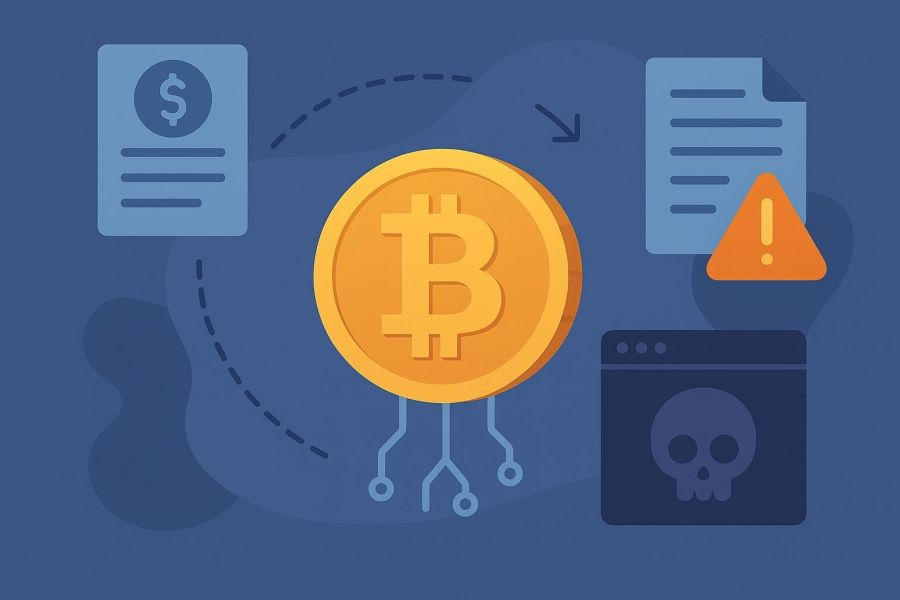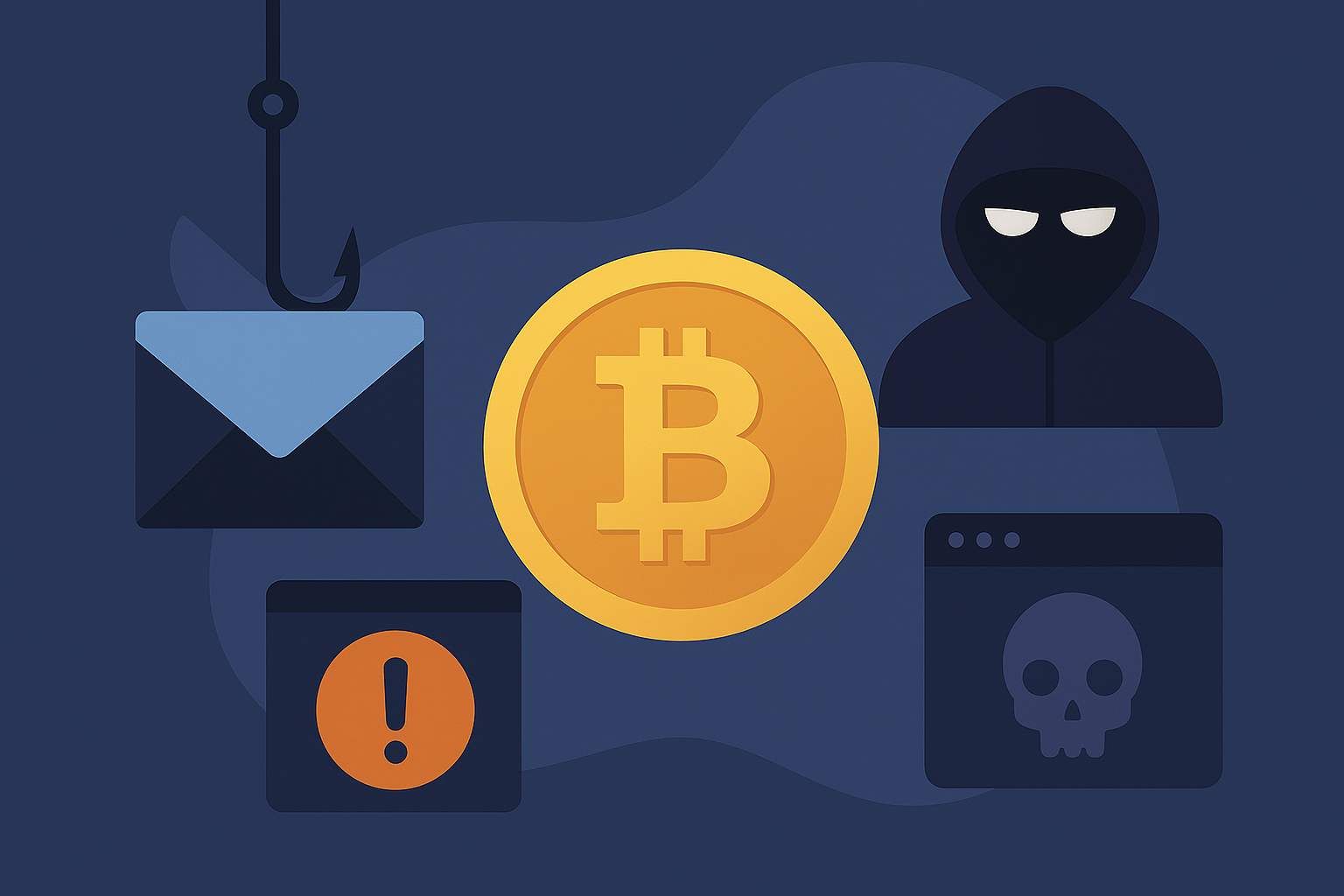
What Is Phishing?
Phishing is a deceptive technique used by attackers to trick you into revealing sensitive information like passwords, recovery phrases, or private keys. These scams often mimic trusted services or create a false sense of urgency to get you to act quickly.
Common Phishing Methods in Crypto
- Fake Wallet Apps: Malicious apps that imitate real wallets and steal your credentials.
- Imposter Websites: Lookalike domains that trick users into entering private info.
- Email Scams: Messages that appear to come from exchanges or wallets, asking you to “verify” or “unlock” your account.
- Social Media Impersonation: Fake giveaways or support accounts targeting users in DMs or comments.
How to Protect Yourself
- Always check URLs: Bookmark trusted sites and never click random links from emails or messages.
- Enable two-factor authentication (2FA): Use authenticator apps, not SMS-based codes.
- Verify sources: If someone contacts you about your crypto, assume it’s fake until proven otherwise.
- Use security-focused browsers or add-ons: These can help block phishing domains.
When in Doubt, Wait
If a message urges immediate action or threatens you with loss, take a breath. Real services don’t operate that way. Phishing relies on panic—stay calm, double-check, and ask for help if needed.



